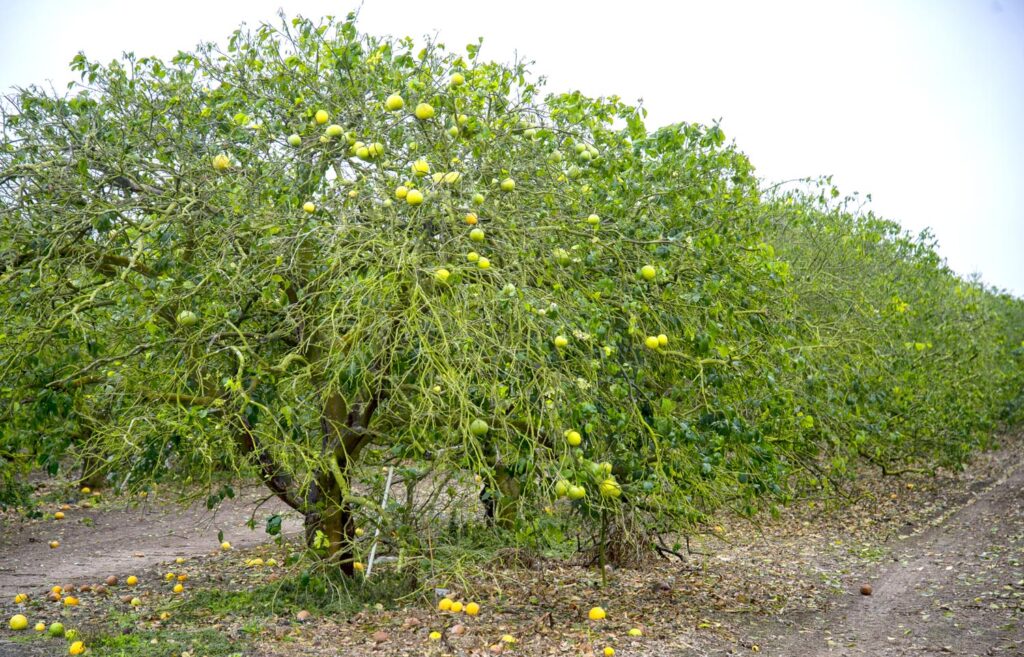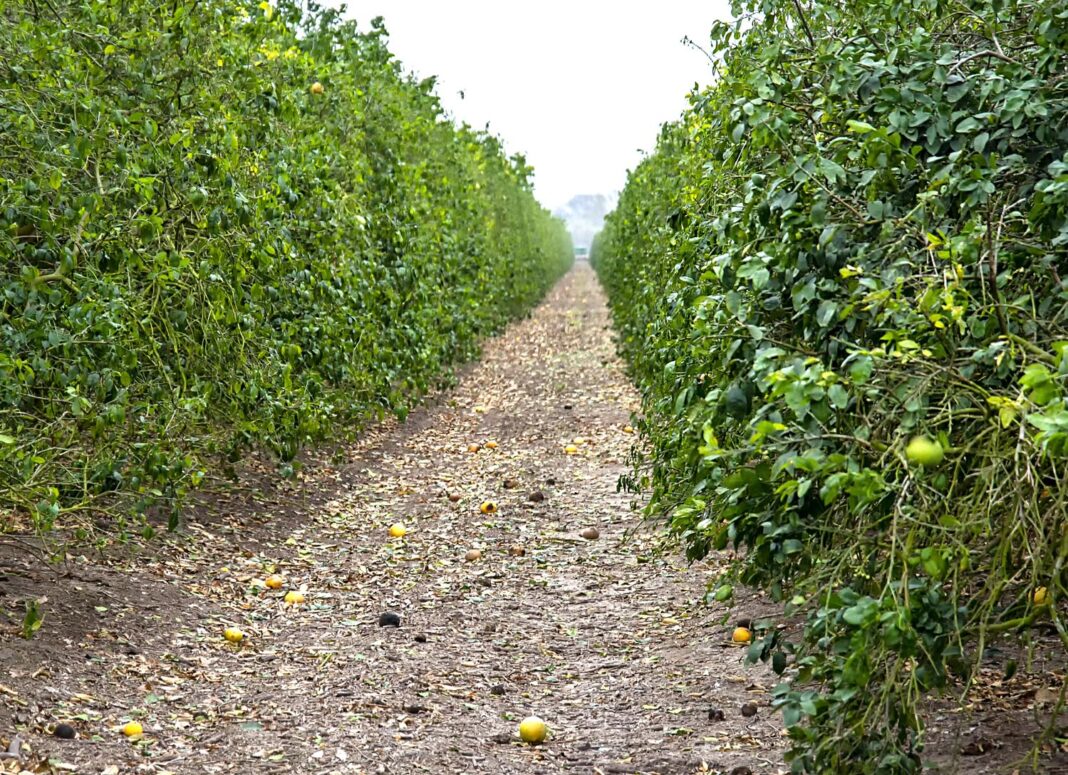HARLINGEN — Valley citrus has been battered and bruised over the last year, and for some growers, the extreme cold may put an end to hopes of big profits this season.
“I told somebody it was actually the trifecta,” Dale Murden, president of Texas Citrus Mutual in Mission, said Tuesday. “It started with the drought, then Hurricane Hanna, then the St. Valentine’s Day massacre. Plus the pandemic, so whatever a four is, it’s not a trifecta.”
Valley growers have about 55 percent of their grapefruit crop still on the trees, and those able to harvest early are thanking their luck today.
But others are not so fortunate, with temperatures in some of the Mid-Valley citrus groves dropping all the way to 21 degrees Sunday night.
“But our Valencia oranges, the late oranges, we haven’t even started to harvest those yet,” Murden said, “so 100 percent of those are still on the trees.”
Onions and more
The Valley’s other cool-weather crops suffered some damage, but the extent of it will take days or perhaps even weeks to determine, said Juan Enciso, associate professor at TAMU AgriLife in Weslaco.
“I did drive around yesterday to take a look at crops, but it’s a little bit too early to say. But we certainly did reach a threshold that would cause certain plants that their water, their plant juices, would freeze, that being citrus fruit, onions, celery, Swiss chard, beets and parsley,” Enciso said. “Things that we have in the ground now could have come through a deep freeze and be injured by it.”
Onions are one of the staple crops in the Valley, which are planted in the fall and harvested in spring. They are known to be one of the most resilient crops when it comes to cold weather.
But even they have limits.
“Onions are cool-season plant meaning they like cool weather, not freezing weather, and like I said, when you’re below 26 for more than six to eight hours, the outer scales will freeze and because those outer scales freeze, that basically damages the onion plant and that’s not good,” Enciso said. “What we have observed in the past, your yields will be down, there will be something to harvest, but yields will be down, and in some situations the fields will not be harvestable.”

Tree damage
Murden said some of the citrus still to be picked was frost-damaged, and for this fruit, a quick trip to a juice processing plant may be the best a grower can hope for.
“As far as trees, we’ll probably experience some limb die-back to a certain size, hopefully no trunks were damaged,” he said. “But again, it’s just going to take a couple of weeks.”
“What was really concerning is some of our trees had started to bloom, and the bloom starts my next year’s crop, the crop that I’ll start in October,” he added. “Whatever trees were blooming, and that is a certain percentage, that’s going to be lost. So next year’s crop is already going to be lighter, we know, and we could lose the entirety of the rest of this crop.”
Hanna’s wrath
The Valley’s farmers, including citrus growers, already were hard-hit by weather in the region that started with last spring’s drought. Then Hurricane Hanna came ashore north of Port Mansfield and dumped tremendous rains right up the Valley, rainfall that came at the worst possible time for cotton growers.
Those twin plagues so damaged cotton which was popping from bolls that just
13,000 acres, or about 8.1 percent of 2020’s 162,000 planted acres, was eventually picked.
The value of that crop, according to Samuel Zapata, a TAMU AgriLife economist in Weslaco, was just $9.35 million, the second-lowest financial yield for Valley cotton since 1990.
Also damaged was late grain sorghum, which had not been combined, as well as crops like sesame, where high winds knocked over entire fields.
Wind problems
Sometimes citrus groves can be salvaged during sub-freezing conditions by spraying the trees to provide a protective layer against the cold.
“We use what we call ‘micro-sprinkler irrigation,’ and we’ll freeze a tree and keep it a little warmer under that ice layer, but it was so windy that the placement was almost impossible Sunday night,” Murden said. “The wind was blowing the sprinklers away from trees and not directed to where you wanted it.”
For citrus growers, the frustration of these weather-related episodes has been especially high, because they thought they were through the worst of this growing season and were about to come out the other side in relatively good shape.
“It’s been one dadgum thing after another,” Murden said. “And having said that, with Hurricane Hanna we estimated we probably had a 28-percent, 25-percent fruit loss from that.”
“But we were having a good year,” he added. “The crop’s quality was good, the size was good, prices were good. But in grapefruit’s case, when you have 50 percent to go (still to pick), that’s a blow. And that’s just the industry. Some growers didn’t get anything picked. You’ve got some individual growers who had 100 percent of their crop left on the tree. It was a real blow.”





